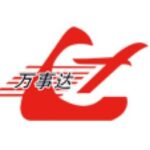Prices for flat-rolled products in Europe stable for the past three months, but waiting for the fall can hardly be called favorable
In fact, from the end of may on the European flat steel market no significant changes. Quotes for steel products largely stabilized. Hot rolled coils are offered at prices from EUR 475-480 / t EXW Italy to 510-520 euros per ton EXW in Germany and the countries of Central Europe. Steel plate in early August, fell to about 530 Euro per MT EXW Italy, but quoted, the average of 30-40 euros per tonne higher than in other States of the European Union. Zinc stabilized in the interval between 540 and 590 Euro per MT EXW with the same regional division.
For the third month in a row the participants of the European steel market are complaining of extremely low buying activity. Distributors and end consumers all summer long supported the stock at minimum level, and deals were mainly targeted. To revive the market could not message about the coming raising of the quotes or declare discounts. Experts forecast earlier resumption of major purchases in the second half of August, now carry this event in September and even early October.
Foreign trade activity in Europe last time was weak. Demand is mostly cheap Ukrainian and Russian products. In mid-August, the price of hot rolled from CIS countries, supplied to countries of Central and Eastern Europe did not exceed 475-490 Euro / t DAP. At the same time, Chinese and Indian companies are offering hot rolled coils to European customers at 510-530 euros per ton CFR with the delivery in October-November. Most buyers think these prices are too high.
At the same time, some European companies put your hot car on sale in Turkey at $610-620 / t CFR. The Euro reached a relative stability near the mark of $1.23, compared to neutral. To some extent it protects the European steel market from cheap imports, but not too favorable to exporters from the EU.
If in July, some metallurgical companies from the EU raised the question about increase of quotations in September, in August ad this kind of completely stopped. Apparently, manufacturers believe that the best option for them in the current situation is to keep the current prices. A number of companies in August has suspended production for overhaul of equipment so that the volume of supply in the early fall will be limited. However, the demand is likely to remain extremely weak.
The source of the pessimistic forecasts is the economic situation in the region. In the second quarter of the combined GDP of the EU decreased by 0.2% compared with the previous quarter and by 0.4% ? compared to the same period a year ago. Of the major States a positive result was observed only in Germany, the Netherlands and Austria. However, industrial production is declining even there.
Many experts are expecting September to the aggravation of the financial crisis. The Spanish government has already quite openly argues that the country will not cope with their problems without external assistance. Greece is on the verge of leaving the Eurozone and the country is threatened with a genuine economic collapse. Over the past three years the country's GDP decreased by 20%. Public debt in Italy has reached $ 2 trillion. euros, and the budget deficit in the first half of the year has increased despite all the efforts of the government to reduce spending and raise revenues by increasing the tax burden on the economy.
Apparently, in the coming months in the industry and the consumer market of the European Union will continue to decline, which will limit the demand for steel products. However, steel companies expect September and October to increase sales, as many distribution companies will need to update the inventory of the rental, however any price increases in Europe in the foreseeable future may have only short-term.
Victor Tarnavsky
Rusmet.ru
